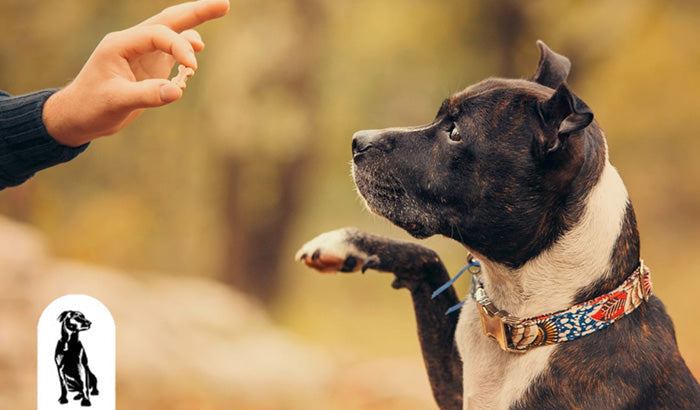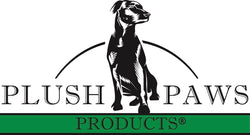
Training your dog goes beyond teaching tricks; it's about building a lifelong partnership rooted in mutual respect and understanding. Consistent training serves as the foundation of good behavior, helping your furry friend understand expectations in various situations, which keeps their tails wagging and manners impeccable.
This guide delves into the latest and most effective dog training methodologies. These updated tips aim to help you and your dog succeed together in a fun and rewarding way. Whether you're refining basic obedience skills or addressing new behavioral challenges, you've come to the right place.
Grab your treat pouch, and let's dive into top-notch training strategies that will keep both tails wagging and faces smiling. Let's start building better behaviors with some paws-itively impactful training techniques!
Establishing rules and boundaries
Consistency is key
Think of consistency as the secret sauce that ensures your dog's training sticks. Dogs thrive on predictability, and when you maintain consistent rules and boundaries, you create a clear path for them to follow, reducing confusion and boosting their confidence.
Whether it's a firm "no" to jumping on guests or a cheerful "yes" to sitting politely before meals, your steadfast consistency helps your dog understand their world and what’s expected of them.
Setting boundaries
Setting boundaries in your home is about more than just teaching your dog where they aren’t allowed; it’s about defining spaces where they can thrive. Determine which areas are dog-friendly and which are off-limits, using gates or closed doors to manage their access around the house. It’s also about creating positive spaces where your dog can relax and play.
Here are some tips for effectively setting boundaries:
Use visual markers
Help your dog recognize boundaries with mats, rugs, or gates, which can clearly delineate their space.
Be clear and consistent
Whenever your dog tests a boundary, gently but firmly guide them back. Consistent correction, paired with positive reinforcement for respecting a boundary, solidifies the rules.
Reward good behavior
When your dog obeys the boundaries, reward them with a treat, a belly rub, or verbal praise to reinforce good habits.
Setting and maintaining clear boundaries helps keep your home organized and teaches your dog respect and safety, fostering a harmonious living environment. These strategies build a framework of trust and order, clearly defining where your pet fits within the family.
Positive reinforcement techniques
Embrace the power of "yes" with positive reinforcement! This method focuses on rewarding your dog for good behavior, transforming dog training from a chore into a delightful activity. Positive reinforcement strengthens the bond between you and your dog and encourages a happier, more compliant attitude.
Positive experiences motivate dogs to repeat desired behaviors, building confidence and a willingness to learn. This approach fosters trust and affection, making your dog more attentive and connected.
Examples of positive reinforcements:
- Tasty treats: Reward your dog with small, delicious treats that they love. These treats are quick to eat and help your dog stay focused on training.
- Praise galore: A simple "Good dog!" or "Yes!" combined with a pat or gentle ear scratch reinforces your pleasure with their behavior.
- Playtime: Use playful rewards like a ball toss or tug-of-war to make training fun and physically engaging.
- Extra cuddles: Show affection with cuddles or snuggles, especially effective for affectionate breeds, making them feel loved and valued.

Effective communication
Dogs express their feelings, desires, and even health through body posture, tail wags, ear positions, and vocalizations.
For instance, tail wags vary greatly — slow wags might show uncertainty, while vigorous "helicopter" wags usually indicate extreme happiness. Ears standing up typically suggest alertness or interest, whereas flat ears can signal fear or aggression. Eyes also play a crucial role; direct eye contact might be a challenge, while averted eyes often denote submission or stress.
Similarly, a dog’s bark may range from sharp alerts to playful elongated sounds, each carrying distinct messages.
By tuning into these cues, you'll better understand what your dog is trying to communicate, allowing you to respond more effectively to their needs and creating a happier and more harmonious home.
Clear commands
Clear communication is crucial not just for understanding your dog, but for ensuring they understand you. Here’s how to ensure your commands are unmistakably clear: Keep commands concise, ideally one or two syllables like "sit," "stay," "come," and "down."
Consistency is crucial; always use the same words and tone for each command to avoid confusion.
Since dogs are highly attuned to physical cues, incorporating hand signals with verbal commands can enhance understanding. Regular, brief dog training sessions are essential to reinforce these commands, ensuring your dog’s responses become reflexive and automatic.
Socialization skills
A well-socialized dog is happier, more confident, and behaves better. Exposing your dog to a variety of people, animals, environments, and experiences from an early age teaches them to react to the world in a healthy, fearless way.
Well-socialized dogs are less prone to develop behavioral problems like aggression and anxiety, confidently wagging their tails at the park, calmly walking down busy streets, and welcoming new experiences enthusiastically.
Ready to help your pup become the social butterfly of the dog world? Here are effective strategies to enhance their social skills:
Start early and go slowly
Begin socializing your dog by about 16 weeks of age and continue introducing them to new experiences at a pace they're comfortable with. It’s crucial to avoid overwhelming them as it might have adverse effects.
Puppy classes
Enroll your dog in puppy classes to meet other dogs in a controlled, safe environment. These classes often provide valuable training and behavior management tips.
Diverse experiences
Introduce your dog to various people, places, and sounds. Meeting different people and exploring new places like parks and pet-friendly stores can help mitigate fear and anxiety in new situations.
Playdates and parks
Schedule playdates with friendly, vaccinated dogs and visit dog parks to allow interactions with various dogs. Monitor their body language to ensure they're comfortable and enjoying themselves.
Keep it positive
Link new experiences with positive outcomes like treats, toys, or praise to make new encounters enjoyable. If your dog feels scared, slow down and adopt a more gradual approach.
Handling common behavioral issues
Chewing and barking
Is your dog turning into a noise and destruction machine? Let's tame those wild habits with some effective strategies! Chewing and barking are natural behaviors for dogs, but they sometimes exceed acceptable levels. Here's how to manage them:
Chewing solutions
Provide plenty of suitable chew toys and rotate them to maintain interest. If you catch your dog chewing something, they shouldn't calmly redirect them to a toy. Consistent redirection helps them learn what they may and may not chew. If boredom is the cause, increase their physical and mental activities to keep their jaws busy in a constructive way.
Barking fixes
Barking may indicate distress, alertness, or excitement. Identify the cause first; if your dog barks at passersby, limit their view from windows. For anxiety-related barking, consider training techniques or calming products. Teach commands like "quiet" and reward obedience to manage vocal outbursts.
Jumping up
Energetic greetings that knock visitors over are problematic. Training your dog not to jump on people is essential for polite interactions. Only give attention when all four paws are on the ground. Practice with family and visitors, ignoring jumps and rewarding calm standing.
Teach your dog to sit for greetings as a polite alternative to jumping. Reward generously for sitting, reinforcing that calm behavior earns them affection and treats. Ensure all who interact with your dog enforce the same rules. Consistency accelerates learning and reinforces acceptable behavior.
With patience, consistency, and plenty of rewards, you will guide your dog toward behaviors that make them a pleasure to live with.
Health and exercise
Ever noticed how a good workout leaves you feeling upbeat and zesty? The same applies to your four-legged friend! A dog’s physical health greatly influences their behavior. Fit pups are usually happy, while health issues lead to discomfort, causing crankiness or lethargy.
Regular check-ups help catch any health issues early, ensuring your dog remains not only physically but also emotionally stable.
Dogs need regular exercise to stay healthy and happy, and tailoring an exercise routine for your dog helps channel their energy positively and reduce anxiety. Here's how to make exercise time fun:
Ensure at least two brisk walks per day. These are more than bathroom breaks; they should be real walks that engage and excite.
Stimulate both mind and body with games like fetch, tug-of-war, and treat hide-and-seek, which are great for energy burning and mental engagement.
Set up a mini obstacle course in your backyard or at a park. This provides both physical exercise and mental stimulation as your dog learns to navigate. Explore activities like flyball, disc dog, or dock jumping, depending on your dog’s breed and interests. These sports boost fitness and mental sharpness while strengthening your bond.
On days when outdoor activity isn’t feasible, use interactive toys or puzzle feeders to keep your dog engaged indoors, helping prevent restlessness and keeping their minds sharp.
By integrating fun, varied activities into your dog's daily schedule, you ensure they stay physically active and mentally alert, ready to engage in good behavior.
Professional help
Is your dog's behavior leaving you puzzled or stressed? Sometimes, DIY isn't enough, especially with challenging behavioral issues. It's vital to know when to seek professional help to significantly improve both your life and your dog's well-being.
Consider professional dog training or behavioral therapy if your dog shows persistent issues like aggression, excessive barking, or separation anxiety, especially if you've tried various strategies without improvement.
Sudden changes in behavior could indicate underlying problems that a professional can more effectively diagnose and treat. Also, if your dog’s behavior poses any risk to people or other animals, professional intervention is crucial to manage their behavior safely and effectively.
Selecting the right trainer or behaviorist is like choosing a guide for a trek — it’s important to find someone who is knowledgeable, experienced, and a good match for your dog’s personality and training philosophy. Here are steps to find the perfect match:
- Check credentials: Look for trainers with certifications from reputable organizations like the International Association of Animal Behavior Consultants (IAABC) or the Certification Council for Professional Dog Trainers (CCPDT).
- Methods matter: Verify that their training methods rely on positive reinforcement instead of punishment. The right approach should build trust and confidence in your dog.
- Ask for references: Rely on word of mouth or positive testimonials. Ask other dog owners or your vet for recommendations.
- Meet and greet: Set up a meeting to see how the trainer interacts with your dog. A suitable trainer will be patient, communicative, and attentive to your dog’s needs and behaviors.
- Understand specialties: Some trainers specialize in areas like aggression, anxiety, or obedience. Ensure their expertise meets your specific needs.
Don’t hesitate to seek help; it’s a responsible step towards ensuring your dog’s happiness and safety.

At Plush Paws, we understand that every dog is unique. We're here to support you with products that make training your dog more effective and your adventures together safer and more enjoyable.
From durable car seat covers that keep your rides smooth and clean to supportive pet care items, Plush Paws provides the quality and reliability every dog owner needs.
